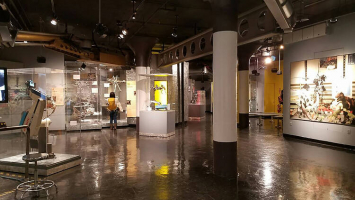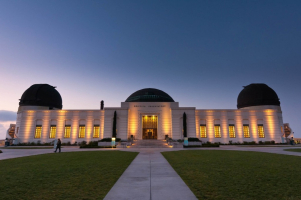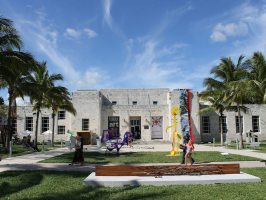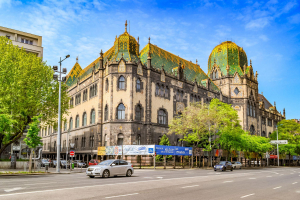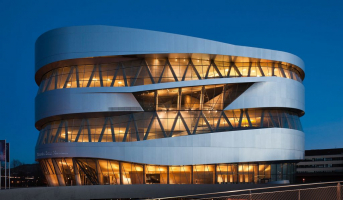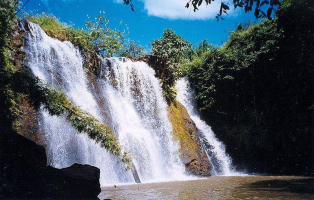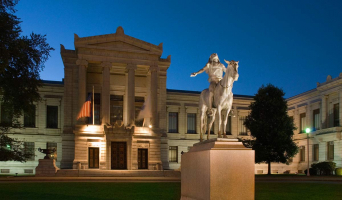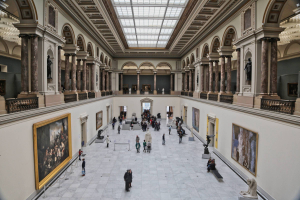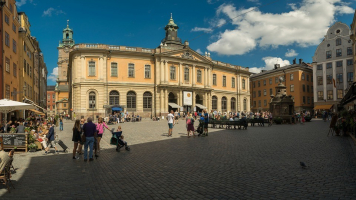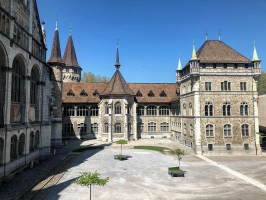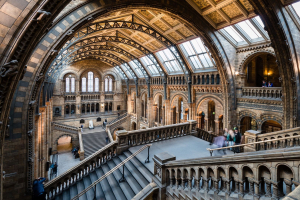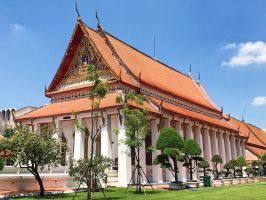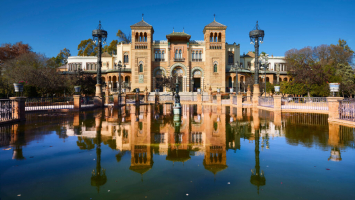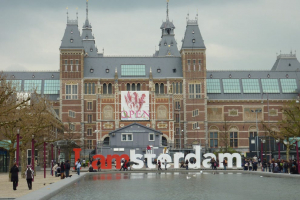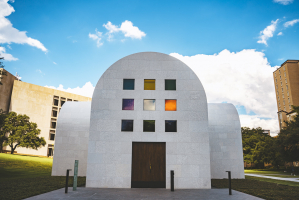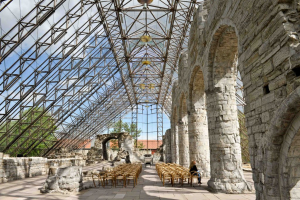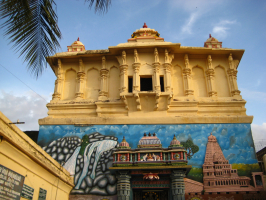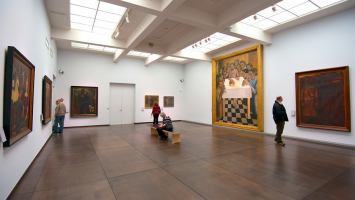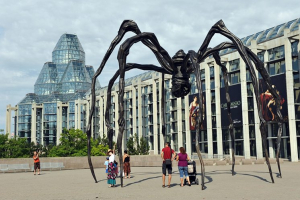Top 5 Best Museums to Visit in Cambodia
If you wish to visit an unusual region, Cambodia is without a doubt the place to go. There are several natural and tourist attractions that will help you to ... read more...explore the finest of Cambodia. Waterfalls, beaches, and rainforests are all waiting for you. Furthermore, there are several museums in Cambodia for visitors who want to learn about the country's history while on a Cambodia trip. Let's have a look at the best museums in Cambodia.
-
The Tuol Sleng Genocide Museum, sometimes known simply as Tuol Sleng, is a museum dedicated to the Cambodian genocide. The location is a former secondary school in Phnom Penh that was utilized as Security Prison 21 by the Khmer Rouge dictatorship from 1975 until its defeat in 1979. From 1976 to 1979, an estimated 20,000 individuals were imprisoned at Tuol Sleng, one of the Khmer Rouge's 150 to 196 torture and death facilities. On July 26, 2010, the Extraordinary Chambers in Cambodian Courts convicted Kang Kek Iew of crimes against humanity and severe violations of the 1949 Geneva Conventions. He died while serving a life sentence on September 2, 2020.
The structures of Tuol Sleng have been maintained, with some chambers remaining as they were when the Khmer Rouge was pushed out in 1979. The dictatorship amassed vast archives, including hundreds of images. Several exhibition rooms are now lined from floor to ceiling with black and white images of some of the estimated 20,000 inmates that went through the jail.
Building A, B, C, and D are the four principal structures on the property. Building A has the big cells where the last victims' bodies were discovered. Photographic galleries are housed in Building B. Building C has the rooms that have been subdivided into tiny cells for the convicts. Other artifacts housed in Building D include torture tools.From 8 a.m. to 5 p.m., the museum is available to the public. From 2:30 pm to 3 pm (Monday–Friday), visitors can see a "victim testimonial". Along with the Choeung Ek Memorial (The Killing Fields), the Tuol Sleng Genocide Museum is a must-see for visitors to Cambodia. Tuol Sleng is also a significant educational and memorial place for Cambodians. Since 2010, the ECCC has taken Cambodians on a "learning trip" to Tuol Sleng, Choeung Ek, and the ECCC facility.
Location: Corner of Street 113 & St 350 History Museum, Phnom Penh 12304 Cambodia
Website: tuolsleng.gov.kh
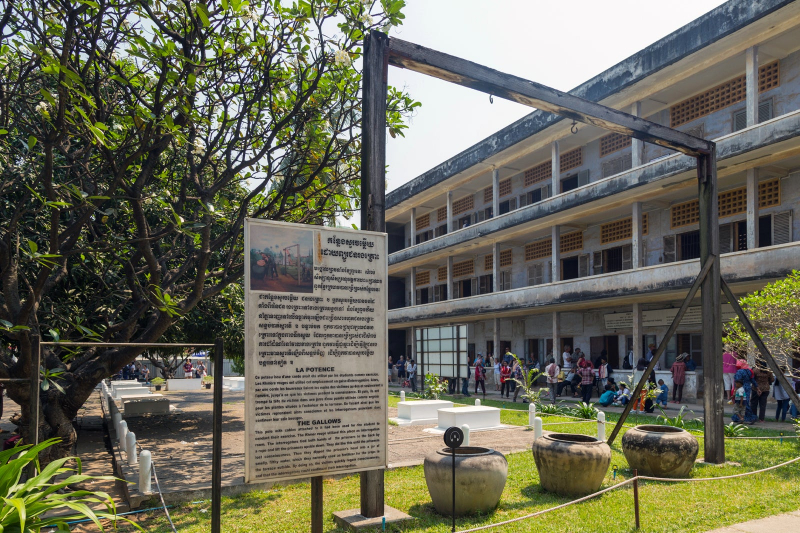
Tuol Sleng Genocide Museum 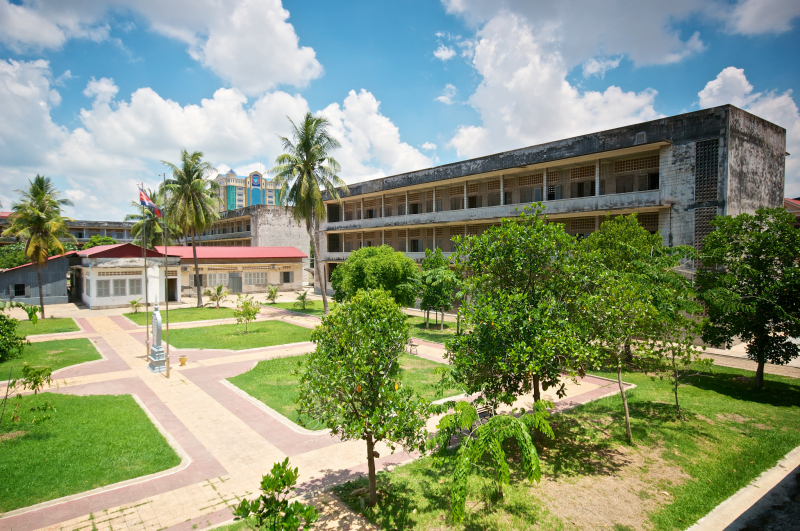
Tuol Sleng Genocide Museum -
The Cambodian Landmine Museum and Relief Facility is a museum in Cambodia that is located south of the Banteay Srey Temple complex, 25 kilometers north of Siem Reap, and within the Angkor National Park. Tourists started hearing stories of Aki Ra, a young Khmer guy who removed landmines with a stick and had a house full of defused ordnance. Ra began charging $1 to view his collection, with the proceeds going toward furthering his activities. The Cambodia Landmine Museum was born.
The Cambodian government ordered the closure of Aki Ra's museum in 2007. He was given permission to relocate it 40 kilometers from Siem Reap, near Banteay Srey Temple, within the Angkor National Park. The Cambodia Landmine Museum Relief Fund, formed by documentary film producer Richard Fitoussi, gathered the funds to purchase the property and construct the Museum. Tom Shadyac, a California-based film filmmaker, contributed the majority of the cash. The new museum, which opened in May 2007, has a four-gallery museum as well as 27 children.
Location: 67 Angkor National Park, Siem Reap
Website: cambodialandminemuseum.org
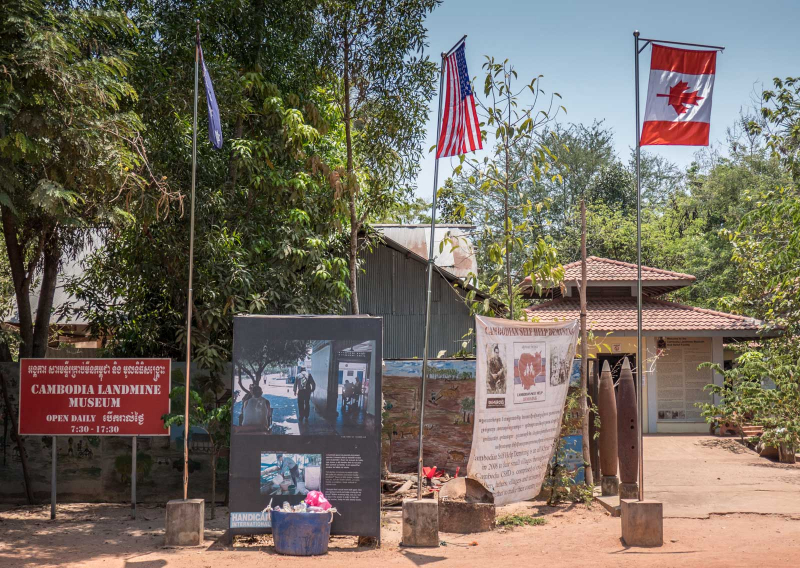
Cambodian Museum of LandMines 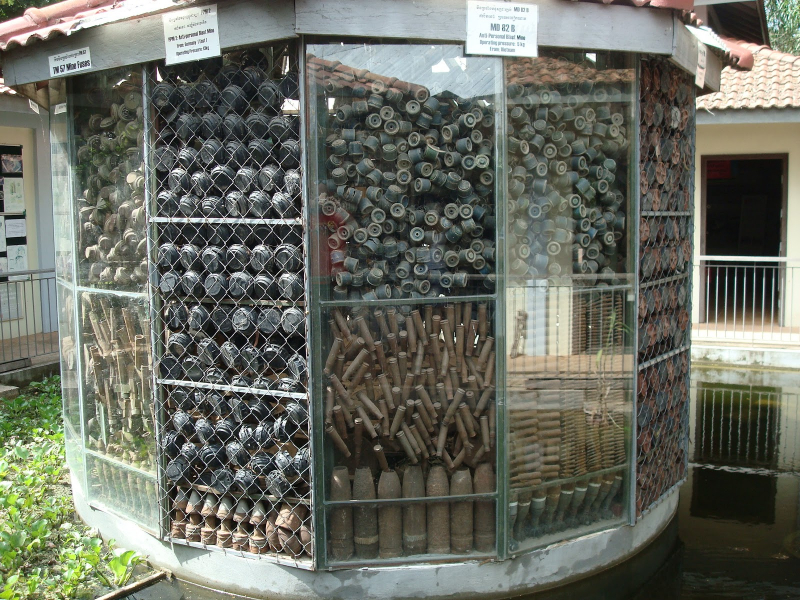
Cambodian Museum of LandMines -
The National Museum of Cambodia is the country's largest cultural history museum as well as its major historical and archaeological museum. It is located in Phnom Penh's Chey Chumneas district. The museum includes one of the most extensive collections of Khmer art in the world, including sculptures, Khmer ceramics, bronzes, and ethnographic artefacts. Its collection has about 14,000 artefacts dating from ancient ages through eras before, during, and after the Khmer Empire, which spanned from Thailand to present-day Cambodia and southern Vietnam at its peak.
The National Museum of Cambodia lies on Street 13 in downtown Phnom Penh, just north of the Royal Palace and west of Veal Preah Man Square. The compound's visitors' entrance is located at the intersection of Streets 13 and 178. The Royal University of Fine Arts is located on the museum's western side. The Cambodian Ministry of Culture and Fine Arts is in charge of the museum. The museum buildings, which were influenced by the Khmer temple style, were built between 1917 and 1924. The museum was officially opened in 1920 and refurbished in 1968. The museum aims to educate and inspire visitors by promoting knowledge, understanding, and appreciation of Cambodian culture and heritage.
Location: Preah Ang Eng St. (13), Phnom Penh
Website: cambodiamuseum.info
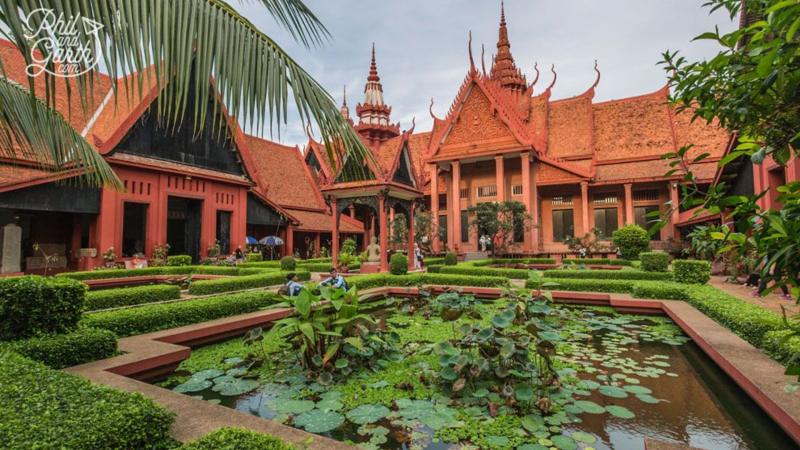
National Museum of Cambodia 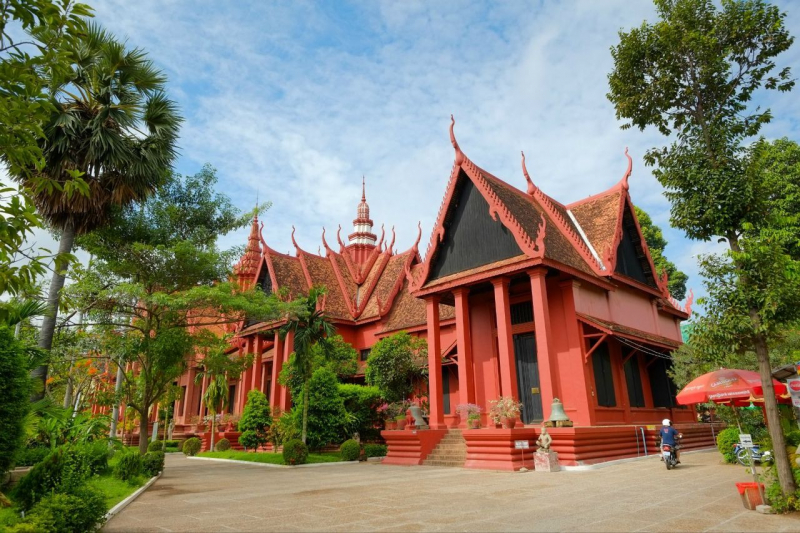
National Museum of Cambodia -
The War Museum Cambodia is located on National Highway No. 6 between Siem Reap and the International Airport in Cambodia. The goal of this museum is to keep the memory of Cambodia's civil war alive and to conserve the unique collection for posterity.
The War Museum Cambodia boasts a one-of-a-kind collection. Since 1999, the collection on display has been gathered from locations where conflict has occurred (Anlong Veng, Siem Reap, Odor Meanchey). It is made up of hardware from China, the United States, and the Soviet Union. Some of this military equipment was utilized in World War II before being employed in Cambodia.
Because most battle antiques were sold for scrap, the museum's collection is priceless. People have been collecting and selling such equipment because scrap metal pays well. They might have gotten at least $300 to $400 for the tank. Competition from scrap merchants was not the only issue the museum encountered as it assembled its collection: much of the machinery was quite heavy, and access to deep forest areas to remove the objects was difficult.
Location: Village Kaksekam, Krong, Siem Reap
View Details: bit.ly/39WFvlp
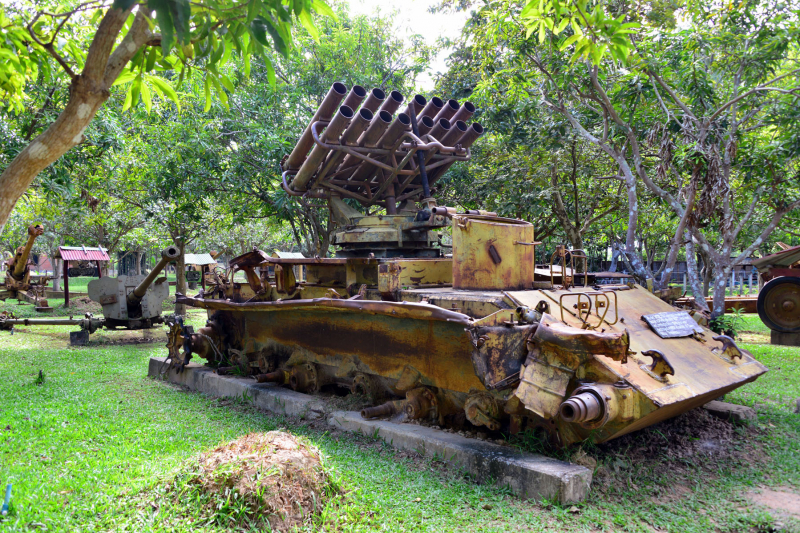
War Museum Cambodia 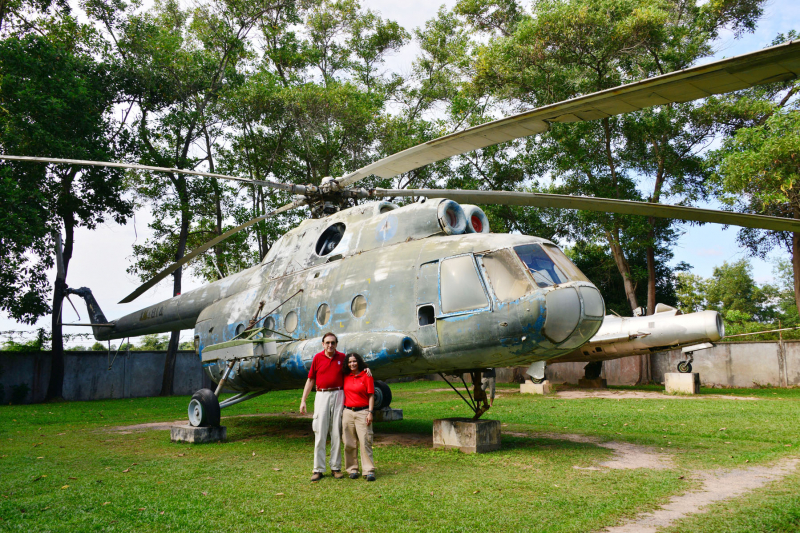
War Museum Cambodia -
The Angkor National Museum is an archaeological museum dedicated to the collection, preservation, and presentation of Angkorian artifacts, as well as to providing information and education about the Khmer civilization's art and culture, with collections primarily dated from the Khmer Empire's Angkor period, which lasted from the 9th to the 14th centuries. The majority of the objects were unearthed in and around the neighboring Angkor archaeological sites. The museum is located in Siem Reap, Cambodia, halfway between downtown Siem Reap and the northern route leading to the ancient city of Angkor.
The Angkor National Museum, which opened on November 12, 2007, uses audio-visual multimedia technologies to depict the golden age of the Khmer Empire. In eight halls, the museum covers Khmer history, civilisation, and cultural heritage. The museum strictly prohibits photography.
Thai Vilailuck International Holdings, located in Bangkok, owns and operates the museum. It is now showcasing archaeological artefacts loaned from Phnom Penh's Cambodian National Museum. The Conservation d'Angkor, a storage facility for over 6,000 items constructed by the École française d'Extrême-Orient in 1908 and now in the hands of the Cambodian Ministry of Culture, is another source of artifacts.Location: 968, Charles de Gaulle Boulevard, Siem Reap
Website: angkornationalmuseum.com
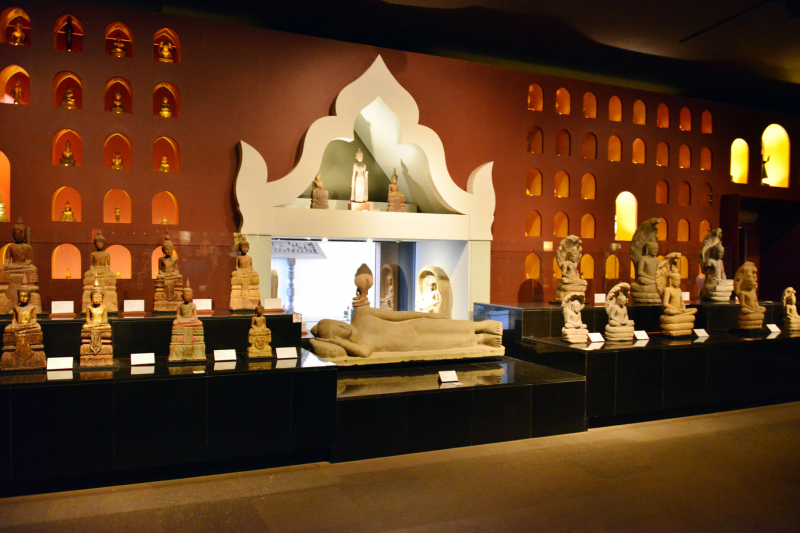
Angkor National Museum 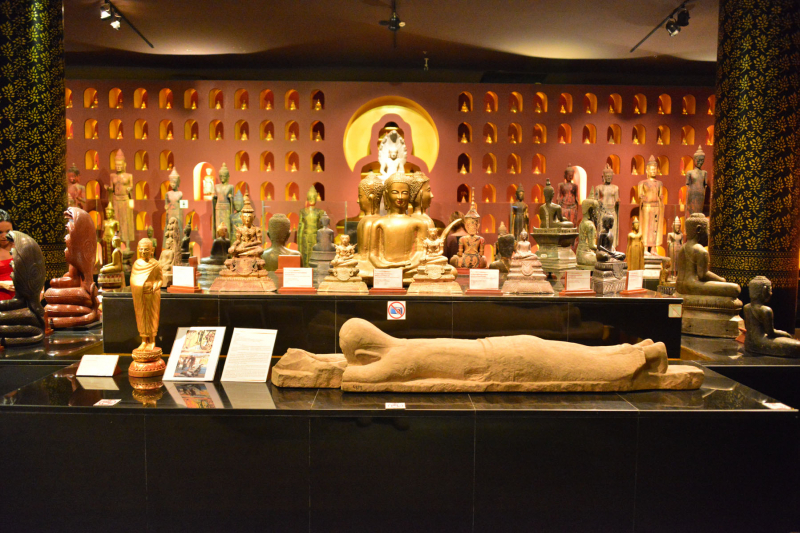
Angkor National Museum







